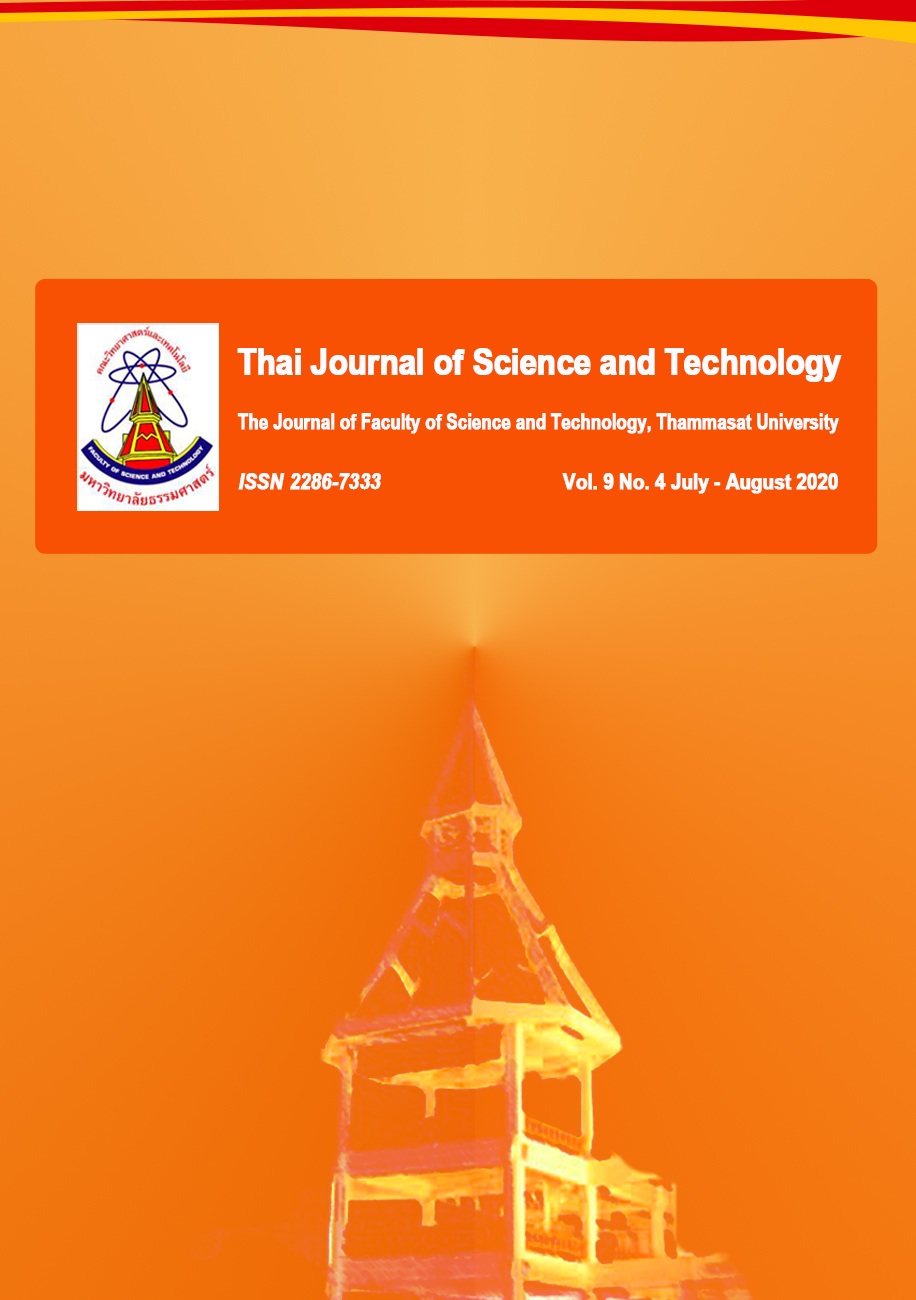การผสานเทคโนโลยีป้องกันกำจัดแมลงศัตรูหน่อไม้ฝรั่งโดยชีววิธี
Main Article Content
Abstract
Integrated technology for biological control of insect pests in asparagus was conducted to study the social and economic factors of farmers in Nakhon Pathom and Kanchanaburi provinces during 2016-2018 by using questionnaires. This study aimed to understand the knowledge of biological control of farmers’ attitude in using biocontrol, farmers' crops practice on the use of biological control for controlling pest. Using simple sampling methods with 50 samples, the statistical analysis from the questionnaire found that farmers had a moderate level of understanding of insect pest control on asparagus. Most of them used biological control to prevent insect pest with medium level of understanding. The study was conducted on a farmer’s crop in Nakhon Pathom and Kanchanaburi provinces with a total of 13 plots. The results showed thrips outbreak throughout the production season and found low amount of other pests including whitefly, beet armyworm and leaf-eating caterpillar. By the end of the study, the demonstrative plots showed lower amount of production cost and also lower profits than the actual farmer’s plots. When considering the benefit cost ratio (BCR) of the asparagus production on this project, it was found that the demonstrative plot had a higher benefit of cost ratio than that of the farmer's plot by 3.85 %. The results of opinions and satisfaction survey of farmers who participated in this project, showed that their total satisfaction at the end of the project was overall evaluated at a high level whereas a moderate level of satisfaction was obtained before the training occurred. The farmers wanted to increase an access to bioproducts and the development of bioproducts type should be easy to use and to produce by themselves.
Article Details
บทความที่ได้รับการตีพิมพ์เป็นลิขสิทธิ์ของคณะวิทยาศาสตร์และเทคโนโลยี มหาวิทยาลัยธรรมศาสตร์ ข้อความที่ปรากฏในแต่ละเรื่องของวารสารเล่มนี้เป็นเพียงความเห็นส่วนตัวของผู้เขียน ไม่มีความเกี่ยวข้องกับคณะวิทยาศาสตร์และเทคโนโลยี หรือคณาจารย์ท่านอื่นในมหาวิทยาลัยธรรมศาสตร์ ผู้เขียนต้องยืนยันว่าความรับผิดชอบต่อทุกข้อความที่นำเสนอไว้ในบทความของตน หากมีข้อผิดพลาดหรือความไม่ถูกต้องใด ๆ
References
ครรชิต พุทธโกษา, 2555, การวิเคราะห์และสังเคราะห์ผลงานวิจัยด้านการควบคุมศัตรูพืชและสัตว์โดยชีววิธีของหน่วยงานภาครัฐในประเทศไทยที่ดำเนินการเผยแพร่ระหว่างปี พ.ศ. 2543-2553.
ปิยรัตน์ เขียนมีสุข, จักรพงศ์ พิริยพล, สมศักดิ์ ศิริพลตั้งมั่น และลัดดาวัลย์ งามวงศ์ธรรม, 2540, การสำรวจการใช้สารป้องกันกำจัดศัตรูหน่อไม้ฝรั่ง, น. 257-262, ใน การป้องกันกำจัดศัตรูพืชโดยวิธีผสมผสาน, เอกสารประกอบการประชุมสัมมนา, กองกีฏและสัตววิทยา กรมวิชาการเกษตร, กรุงเทพฯ.
สาลี่ ชินสถิต, 2558, การผลิตพืชอินทรีย์, กลุ่มพัฒนาระบบตรวจรับรองมาตรฐานการผลิต กองพัฒนาระบบและรับรองมาตรฐานสินค้าพืช กรมวิชาการเกษตร, 57 น.
สำนักวิจัยพัฒนาการอารักขาพืช, 2556, การจัดการศัตรูหน่อไม้ฝรั่งเพื่อการส่งออก, เอกสารวิชาการ, กรมวิชาการเกษตร, กรุงเทพฯ, 99 น.
Cranshaw, W., 2008, Insect Control: Soaps and Detergents, Fact Sheet No. 5.547, Colorado State University, Available Source: http://www.ext.colostate.edu/pubs/insect/05547.html.
Likert, R., 1967, The Method of Constructing and Attitude Scale, pp. 90-95, In Fishbeic, M. (Ed.), Attitude Theory and Measurement, Wiley & Sons, Inc., New York.


